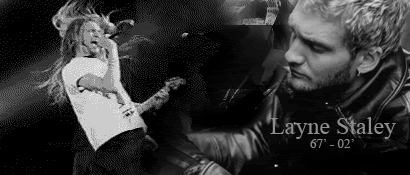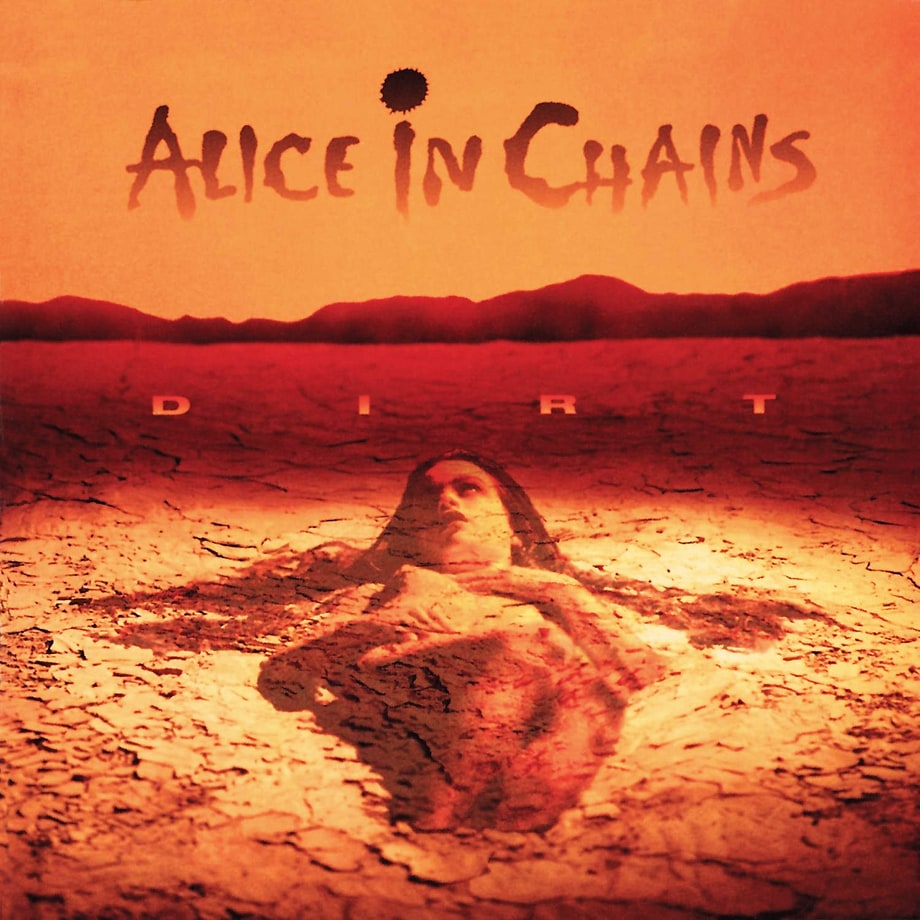Overview and History
Alice in Chains were spawned out of the ‘Grunge’ movement starting in Seattle (early 1990’s), that also gave rise to the other most revered artists of the genre, Soundgarden, Pearl Jam and of course Nirvana. At the time, the youth of the western world were being fed Glam Metal with acts such as Twisted Sister, Motley Crüe and Poison tearing up the airwaves. The grunge sound and aesthetic appealed to many of this young audience as rather than grunge bands sporting makeup and feminine clothing, they were rough around the edges and the sound was decidedly more dirty. This was something more substantial and less stylistic. With more feedback and distortion, guitars tuned down in key, smashing drums and an attitude that matched, Grunge quickly became the new big thing amongst fans liking heavy alternative rock. In this scene Alice in Chains was probably the heaviest sonically and is often regarded by some fans and critics as actually belonging to the heavy metal genre.
The bands first album (Facelift), was released in 1990 and was met with quite a measure of critical acclaim and commercial success selling over 2million copies. The band struggled with this instant success and throughout their career battled heavy substance abuse in particular with heroin, the drug that would eventually take two of its founding members lead singer Layne Staley and original drummer Mike Starr. It was however their second album ‘Dirt’ (1992), that soundly established them as skilled musicians able to compose catchy hooks and deliver electric live performances with their unique sound and style. The album itself is as sonically dark as its lyrical content which for the most part centres around addiction and depression. Whilst I believe there are better songs on this album, I have chosen this track specifically due to it being one of the cited reference tracks for our major CIU project, the ‘Whiskey and Speed’ documentary, EP and covers album.
Band Members
Current
- Jerry Cantrell – Lead Guitar, Vocals
- Sean Kinney – Drums
- Mike Inez – Bass
- William Duvall – Lead Vocals, Rhythm Guitar
Past
- Layne Staley – lead vocals, occasional rhythm guitar (1987–2002; his death)
- Mike Starr – bass (1987–1993, died 2011)
The Song
- Bpm: 140 however changes throughout
- Key: A# minor / C# major
- Song Length (radio edit used here): 5.22mins
The lyrics in ‘Sickman’ are dark and brooding one section, then volatile and full of venom the next. I will address the sound and role of each musical element in the song discussing aspects like Dynamic Range, Spectral Balance and Spatial Characteristics. Should be an interesting analysis. This song follows a regular verse/chorus/bridge structure of sorts, however it is a confused, raucous and disturbing pattern consistently changing tempo/time signature and key. As an example of this dazed and perplexing song structure (typical of Alice in Chains generally), the song begins with the chorus (4/4), then moves to the verse (6/8), and so forth. In addition, rather than seeing a conventional ‘even’ and dependable number of bars in each section (eg. Verse 16 bars/chorus 8 bars), we hear a very different arrangement and to demonstrate this, here is the breakdown of the sections:
Song Structure
- 1st Chorus including intro – Bars 1 thru 18 (18 bars)
- 1st verse – Bars 19 thru 43 (24 bars)
- 2nd Chorus including a screaming breakdown of sorts – Bars 44 thru 60 (19 bars)
- 2nd verse – Bars 60 thru 85 including a 5 bar breakdown (25 bars)
- Bridge – Bars 86 thru 115 including a wonderful major lift and guitar solo to the song at bar 103 (29 bars)
- 3rd Chorus – 116 thru 131 including 3 bar breakdown into the next section (15 bars)
- Final Chorus including fade outro – 132 thru 164 (33 bars)
This structure enhances the sonic feel and lyrical content of the song which is essentially a narcotic fueled depiction of drug dependence, self loathing and a dark morbid outlook for their future prospects in life.

The Musical Elements
Drums
The drums are a driving force in this song and have an epic sound throughout. They open the track with a tribal rhythm panning from the floor tom through the other two toms from right to left with the hi-hat about 50% left. When the kick and snare come in it is a sonic assault with both elements driving down the middle of the soundscape. The kick appears to be operating at around 60Hz, fat, distinctly clear and in the middle of the mix whilst blended in well with the other elements. The snare has a wonderful machine gun whack to it and is dynamically much more prevalent than the kick operating somewhere around 3k. Sounds like it has delay and definitely a little plate or similar reverb applied, unlike the kick which sounds quite dry. The consistency of both these elements suggest ample compression being applied. The hi-hat is almost lost in the mix with the emphasis being placed on the kick and snare. Cymbals are used sparingly at key moments and are dynamically up in the mix when applied. This is particularly true in the verses with a steady ride tingling away and crashes (featuring rich reverb), smashing dynamically at the end of each key phrase for full effect. The panning tends to vary depending on the importance of the song structure and lyrics with single strikes down the centre but multiple strikes often jumping from one side to the other. A good example of this is at the section from 1:10min thru 1:16min and also at 1:24min. The toms reappear every chorus with panning from right to left as in the songs beginning. They are also deployed at the end of key phrases in the verses, however the panning is left to right in these sections.
Guitars
The guitars, as to be expected in the genre play a starring role and are mostly distorted heavily throughout the song. They are definitely double tracked and at the front of the mix just behind the vox, I think they only appear behind the vox (at times), due to the frequency differences! The guitars in the chorus are low and grunty (bouncing between approx 90Hz and 1k) with the double tracking providing a nice stereo image however during the bridge starting at 2:40m there are two distinctive guitar parts. On the left is a highly driven and distorted (a little delay by the sound), guitar part complimented on the right by a cleaner reverbed melody. The two come more to the centre as the section continues but retain their position at left and right. Overall the guitar sound throughout is a real assault on the senses and provides a rich stereo image to the listener whilst remaining hottest down the middle.
Bass
The bass in the track definitely plays a support roll dynamically apart from a few sections where it allowed to shine (eg. 1.21min). It basically backs up the grunt of the guitars and follows their melody throughout staying at between 60 and 500Hz. It is centre in the stereo field throughout the track never deviating. Surprisingly, it displays a quite warm, clean sound as I suspect they wanted to keep the distortion for the guitars on this occasion? It definitely executes its role well, beefing up the wall of lows that this song possesses.
Vocals
 The vocals on this track (as with the whole of the ‘Dirt’ album), are performed by lead singer Layne Stayley backed up by guitarist Jerry Cantrell. It is these unsettling vocal machinations with their gloomy overtones that above all other elements in their music guarantee to a listener that a song is in fact ‘by Alice in Chains. The lead and backing vox are clearly double tracked and apparently Layne insisted on triple tracking all of his lead vocals on absolutely everything he recorded. Heavy reverb is applied to some sections of the song particularly the verses with the chorus relying more on the application of a short delay. Stayley’s range in this song is showcased with him as powerful in the low registers around 200 – 600Hz up to where most of the action happens between 1 – 2k. Backing vox provides support in the higher frequencies between 1.4 – 2k. The vocals primarily remain straight down the middle (both lead and backing), with little panning at all, however with several layers being recorded sound like they are everywhere. Dynamically the vocals really punch through in the chorus with quite a bit of anguished screaming but in the verses and bridge are more subdued and steady.
The vocals on this track (as with the whole of the ‘Dirt’ album), are performed by lead singer Layne Stayley backed up by guitarist Jerry Cantrell. It is these unsettling vocal machinations with their gloomy overtones that above all other elements in their music guarantee to a listener that a song is in fact ‘by Alice in Chains. The lead and backing vox are clearly double tracked and apparently Layne insisted on triple tracking all of his lead vocals on absolutely everything he recorded. Heavy reverb is applied to some sections of the song particularly the verses with the chorus relying more on the application of a short delay. Stayley’s range in this song is showcased with him as powerful in the low registers around 200 – 600Hz up to where most of the action happens between 1 – 2k. Backing vox provides support in the higher frequencies between 1.4 – 2k. The vocals primarily remain straight down the middle (both lead and backing), with little panning at all, however with several layers being recorded sound like they are everywhere. Dynamically the vocals really punch through in the chorus with quite a bit of anguished screaming but in the verses and bridge are more subdued and steady.
Conclusion
‘Sickman’ as the name suggests, is a disorientating track filled with hopelessness and despair lyrically and the musical elements support this theme brilliantly. It is very ‘in your face’ whilst maintaining an eerie air of doom and confusion reflecting the state of most of the band mentally and physically through their battle with substance abuse. The band had struggled with the success of their debut album ‘Facelift’ released a couple of years earlier, not anticipating the way it would be received, but nevertheless followed this debut up with an album many regard as their best, selling over 10 times as many copies. Commercially Alice in Chains did not reach the lofty heights of their Seattle brothers Soundgarden, Pearl Jam and Nirvana but still left a real legacy, elements of which were to be utilised by many bands to follow. Their unique vocal style, catchy guitar hooks and manic bass driven compositions are still revered as some of the best of the genre.
10 Things You Didn’t Know About Alice in Chains’ ‘Dirt’
